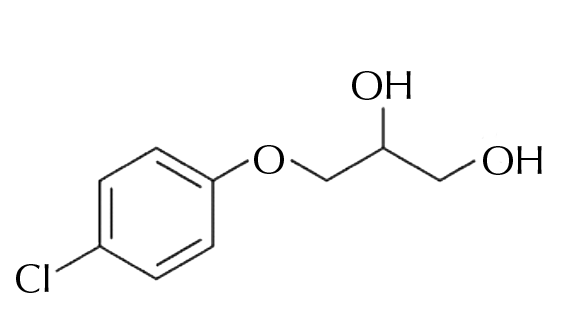What Is Chlorphenesin?
Chlorphenesin is a preservative that is used in a variety of cosmetics and skincare products. Its primary use, as a preservative is to improve shelf life and prevent contamination through use in order to improve the safety of the product.
Chlorphenesin is a synthetically produced ingredient that is used in the formulation of aftershave lotions, bath products, cleansing products, deodorants, hair conditioners, makeup, skincare products, personal cleanliness products, and shampoos. In these types of products it is used as a preservative because of its antifungal and antibacterial properties.
According to information supplied to the US Food and Drug Administration by the industry as part of the Voluntary Cosmetic Registration Program in 2011, chlorphenesin is used in 1,386 cosmetic products. Results from a survey of ingredient use concentrations provided by the Personal Care Products Council in 2011 indicate that in rinse-off products, concentrations of chlorphenesin can be found up to 0.32%, and in leave-on products up to 0.3%.

Chlorphenesin
the good:Chlorphenesin is primarily used as a preservative, increasing the shelf life and safety of the formulation.
the not so good:Chlorphenesin is well absorbed by the skin, which can be a concern for toxicity issues and allergy. However, research suggests that it doesn’t cause any toxicity issues or allergy.
Who is it for?All skin types except those that have an identified allergy to it
Synergetic ingredients:Works well with most ingredients
Keep an eye on:Keep in mind that chlorphenesin is not used to benefit the skin and it only used to improve the safety and shelf life of the product.
Why Is Chlorphenesin Used?
Chlorphenesin functions as a biocide in cosmetic products, which means that it helps prevent the growth of microorganisms such as bacteria, fungi, or molds on the skin and in the product. This reduces contamination issues, increases shelf life and reduces or prevents odor.
Research suggests that chlorphenesin in concentrations 0.1% to 0.3% has bactericidal activity against both gram-positive and gram-negative bacteria, which are the two main classes of bacteria. Chlorphenesin also has fungicidal activity against Aspergillus niger, also known as black mold, Penicillium pinophilum, Candida albicans and Saccharomyces cerevisiae, all types of common molds.
Preservatives have a bad reputation in the cosmetic and skincare industry, particularly in the natural beauty world because of claims that preservatives are hazardous to health. This is why many organic and natural beauty brands often include ‘preservative-free’ claims on product labels. However, the use of preservatives is necessary for most products to prevent degradation caused by microorganisms, and to protect the product from inadvertent contamination by the consumer during use.
A preservative may also be added to a product to protect it against deterioration caused by exposure to oxygen. In this case, these ingredients are also called antioxidants. Just like food, cosmetics products can become contaminated without preservatives, leading to product spoilage and possibly irritation or infections. Microbial contamination of products, especially those used around the eyes and on the skin, can lead to significant problems. Preservatives help prevent such problems.
What Is The Difference Between Chlorphenesin and Chlorphenesin Carbamate?
There is some confusion surrounding the difference between chlorphenesin and chlorphenesin carbamate. While their names are similar their function is quite different. Chlorphenesin carbamate is a centrally acting muscle relaxant, although it is typically no longer used for this purpose in most developed nations due to the availability of much safer spasmolytics. Chlorphenesin carbamate is not a cosmetic ingredient.
Is Chlorphenesin Safe?
The safety of chlorphenesin has been reviewed by the Cosmetic Ingredient Review Expert Panel. The Expert Panel reviewed the scientific data and concluded that chlorphenesin is safe in the present practices of use and concentration in cosmetics and personal care products.
The Expert Panel noted that chlorphenesin was well-absorbed when applied to the skin of rats, however, their concern was minimized because of the negative toxicity data. A few cases of reports demonstrated that chlorphenesin may be linked with eczema and skin irritation.
In tests evaluating allergies to preservatives, chlorphenesin had a high irritancy rate for those allergic to preservatives. The optimal concentration of chlorphenesin for avoiding skin reactions is less than 0.5%.
Many countries, such as Japan, have restricted the use of chlorphenesin in cosmetics and personal care products by giving it concentration limitations.
References:
Panico, A, Serio, F, Bagordo, F, Grassi, T, Idolo, A, DE Giorgi, M, Guido, M, Congedo, M, & DE Donno, A, 2019.. ‘Skin safety and health prevention: an overview of chemicals in cosmetic products’, Journal of Preventive Medicine and Hygiene, vol. 60, is. 1, pp. E50–E57. Johnson, W et al., 2014. ‘Safety Assessment of Chlorphenesin as Used in Cosmetics’, International Journal of Toxicology, vol. 33.







